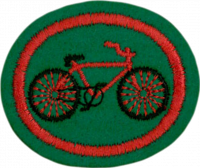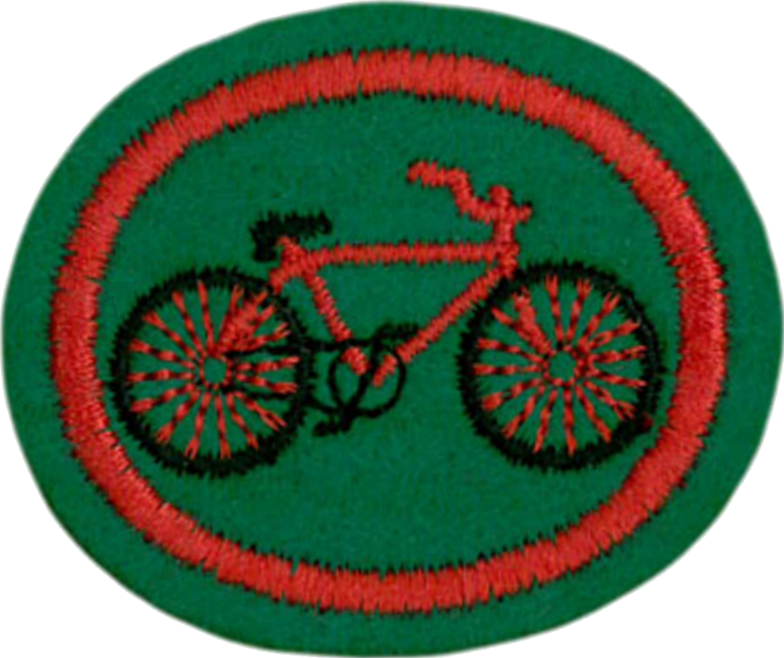Difference between revisions of "AY Honors/Cycling/Answer Key 2/es"
(Created page with "</noinclude> <!-- 3. Reemplazar correctamente un tubo interno roto. -->") |
(Created page with "</noinclude> <!-- 5. Conocer y practicar cortesía, seguridad y las normas de la carretera relacionadas con montar en bicicleta. -->") |
||
| Line 45: | Line 45: | ||
{{clear}} | {{clear}} | ||
| − | + | {{clear}} | |
| − | |||
| − | |||
| − | |||
| − | + | {{clear}} | |
| − | |||
| − | |||
| − | |||
| − | |||
| − | |||
| − | |||
| − | + | {{clear}} | |
| − | |||
| − | |||
| − | + | {{clear}} | |
| − | |||
| − | |||
| − | + | {{clear}} | |
| − | |||
| − | |||
| − | |||
| − | |||
| − | |||
| − | |||
| − | + | {{clear}} | |
| − | |||
| − | |||
| − | + | {{clear}} | |
| − | |||
| − | |||
| − | + | {{clear}} | |
| − | |||
| − | |||
| − | + | {{clear}} | |
| − | |||
| − | |||
| − | + | {{clear}} | |
| − | |||
| − | |||
| − | + | {{clear}} | |
| − | |||
| − | |||
| − | + | {{clear}} | |
| − | |||
| − | |||
| − | + | {{clear}} | |
| − | |||
| − | |||
| − | |||
<noinclude></noinclude> | <noinclude></noinclude> | ||
{{CloseReq}} <!-- 4 --> | {{CloseReq}} <!-- 4 --> | ||
{{ansreq|page={{#titleparts:{{PAGENAME}}|2|1}}|num=5}} | {{ansreq|page={{#titleparts:{{PAGENAME}}|2|1}}|num=5}} | ||
| − | <noinclude> | + | <noinclude></noinclude> |
| − | </noinclude> | + | <!-- 5. Conocer y practicar cortesía, seguridad y las normas de la carretera relacionadas con montar en bicicleta. --> |
| − | <!-- 5. | ||
| − | |||
<div lang="en" dir="ltr" class="mw-content-ltr"> | <div lang="en" dir="ltr" class="mw-content-ltr"> | ||
| Line 217: | Line 179: | ||
</div></noinclude> | </div></noinclude> | ||
{{ansreq|page={{#titleparts:{{PAGENAME}}|2|1}}|num=8a}} <!--T:45--> | {{ansreq|page={{#titleparts:{{PAGENAME}}|2|1}}|num=8a}} <!--T:45--> | ||
| − | <noinclude> | + | <noinclude></noinclude> |
| − | </noinclude | ||
| − | |||
| − | + | <noinclude></noinclude> | |
| − | <noinclude | ||
| − | |||
{{CloseReq}} <!-- 8a --> | {{CloseReq}} <!-- 8a --> | ||
{{ansreq|page={{#titleparts:{{PAGENAME}}|2|1}}|num=8b}} <!--T:46--> | {{ansreq|page={{#titleparts:{{PAGENAME}}|2|1}}|num=8b}} <!--T:46--> | ||
| − | <noinclude> | + | <noinclude></noinclude> |
| − | </noinclude | ||
| − | |||
<noinclude></noinclude> | <noinclude></noinclude> | ||
Revision as of 02:51, 24 May 2021
Nivel de destreza
1
Año
1933
Version
30.12.2025
Autoridad de aprobación
División Norteamericana
Wear a Helmet Bicyclists and bicycle passengers under 18 years old are required to wear helmets.
Always ride with traffic. This is the law. Motorists are not looking for bicyclists riding on the wrong side of the road.
Observe stop signs, signals and basic right-of-way-rules. Bicycle riders on public streets have the same rights and responsibilities as automobile drivers. Cyclists are part of the normal traffic flow and are entitled to share the road with other drivers. Like drivers, bicyclists must yield to pedestrians.
Keep clear of the door zone. Try to ride a door’s width away from parked cars. If you have to ride in the door zone, ride very slowly. You have the right to ride in a traffic lane if it is too narrow to share with a car.
Use hand signals. Hand signals tell motorists what you intend to do. Signalling is a matter of law, of courtesy, and of self-protection.
Keep both hands ready to brake. You may not stop in time if you brake one-handed. Allow extra distance for stopping in the rain and heavy fog, since brakes are less efficient when wet.
Ride a well equipped bike. Be sure your bike is adjusted to fit you properly. For safety and efficiency, outfit it with a bell, rear-view mirror, rack or basket, lights and reflector. Carry a water bottle, bike pump and patch kit. Wear a helmet. Keep your bike in good working order.
Don’t weave between parked cars. Don’t ride out to the curb between parked cars, unless they are far apart. Motorists may not see you when you try to move back into traffic.
Follow lane markings. Make left and right turns in the same way that cars do, using the same turn lanes.
DON'T wear headphones.
DO pull over if you need to use your mobile phone.
A helmet is a form of protective gear worn on the head. Traditionally, helmets have been made of metal. In recent decades helmets made from resin or plastic and typically reinforced with Aramid fiber (e.g. Twaron or Kevlar) have become preferred for most applications. Designed for protection of the head in combat, or in civilian life, from sports injuries, falling objects or high-speed collisions.
Helmets are common in the military, construction, mining, and some sports, including American football, baseball,, ski, snowboarding, ice hockey, equestrian sports, motor sports, and rock climbing. Motorcycle helmets and bicycle helmets are compulsory headgear in some jurisdictions; in the United Kingdom only Sikhs are allowed to ride motorcycles without wearing motorcycle helmets. Bicycle helmet compulsion and even strong promotion has been a heated subject of debate among cyclists and scientists since at least the 1990s, lately focusing on alleged net protective effect at the population level.
- Bicycle Helmet Safety Institute : Helmet info.
- Thoughts from Texas Department of Transportation : Wear a properly fitting helmet to reduce the chances of head injury and death. In some places, city or county law requires it.


